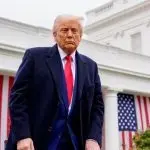
(WASHINGTON) — President Donald Trump on Thursday sharply criticized India over its trade policy, escalating a series of attacks as the White House readies to ratchet up tariffs on the country.
The Trump administration plans to slap 25% tariffs on Indian products and impose additional penalties starting on Friday, the president said on social media. The incendiary rhetoric toward India comes as Trump also prepares to impose new levies on dozens of other countries.
The White House has faulted India for high tariffs that Trump views as an effort to shut out U.S. producers. In recent days, Trump has also condemned India over its decision to continue purchasing Russian oil throughout the Russia-Ukraine war.
India’s tariffs are “far too high, among the highest in the World,” Trump said on social media.
In a statement on Wednesday, the Indian government said it had “taken note” of Trump’s comment and would “study its implications.”
Here’s what to know about the U.S.-India trade feud and why it matters:
Where does Trump’s trade feud with India stand?
Trump is set to hike tariffs on India to 25% on Friday, putting them one percentage point below the level of levies threatened in a Rose Garden ceremony on April 2.
A 25% tariff would set levies with India at a higher rate than the 15% tariffs placed on the European Union and Japan as part of recent trade agreements. The threatened tariff on India would come in slightly below 30% tariffs slapped on China in May.
The proposed levies may complicate ongoing trade negotiations between the U.S. and India, which have sought to reach an agreement over multiple rounds of discussions spanning months.
India, the 12th-largest U.S. trade partner, has become a destination for some manufacturers that shifted production away from China in recent years. In May, Apple CEO Tim Cook said the company had moved production of iPhones sold in the U.S. to India as a means of avoiding high tariffs.
Overall trade in goods between India and the U.S. last year amounted to about $129 billion, the Office of the U.S. Trade Representative, or OTR, found. Top imports from India include apparel, chemicals, machinery and agricultural products.
Why is Trump targeting India?
In recent months, Trump has repeatedly criticized India for elevated tariffs on a range of products, including agricultural and dairy goods.
“We have, over the years, done relatively little business with them because their Tariffs are far too high,” Trump said in a social media post on Wednesday.
India has sought to protect its domestic industries with elevated tariffs on some goods, including levies exceeding 100%.
The U.S. ran a trade deficit in goods of about $45 billion in 2024, which marked a 5.4% increase over the previous year, according to the OTR. By comparison, the U.S. notched a far larger trade deficit with China of $295 billion last year.
More recently, Trump has taken issue with India’s decision to continue buying Russian oil over the course of the Russia-Ukraine war.
India is “Russia’s largest buyer of ENERGY, along with China, at a time when everyone wants Russia to STOP THE KILLING IN UKRAINE,” Trump said on social media on Wednesday.
How has India responded to Trump’s threats?
In a statement this week, the Indian government struck a measured but firm tone in response to Trump.
“India and the US have been engaged in negotiations on concluding a fair, balanced and mutually beneficial bilateral trade agreement over the last few months,” the Indian government said on Wednesday. “We remain committed to that objective.”
“The Government will take all steps necessary to secure our national interest,” the statement added.
The two sides are expected to meet for another round of trade discussions in late August.
Copyright © 2025, ABC Audio. All rights reserved.
